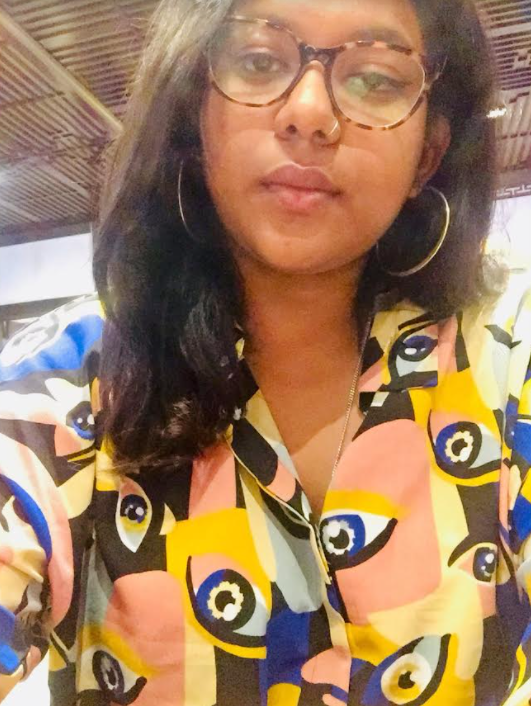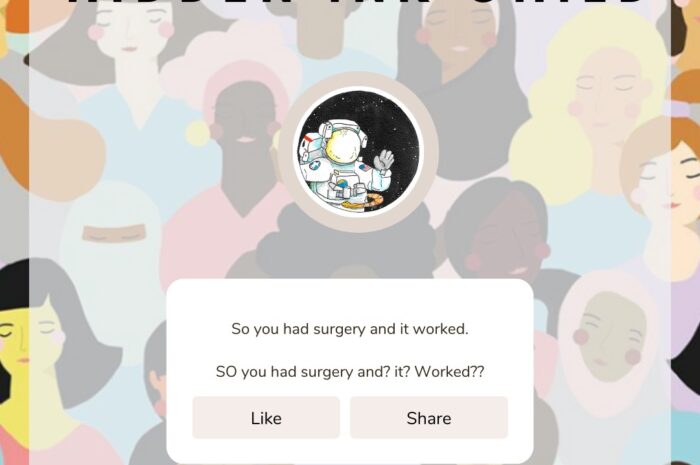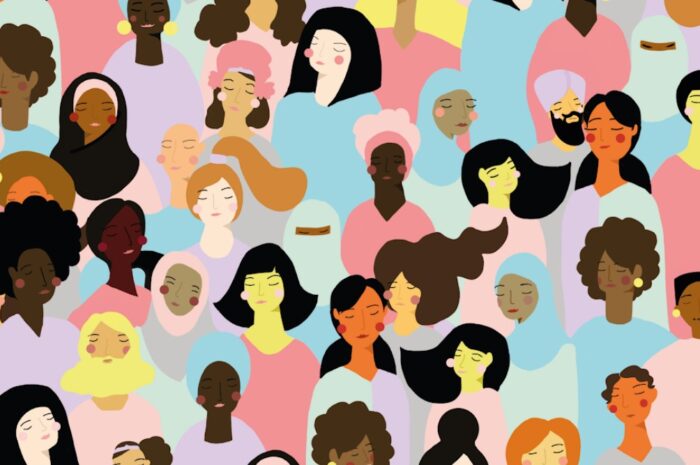
Menstruation and Indian Cultural Practices: Period, Pollution and Purity
by Rittika Dasgupta
This article highlights how menstruation is viewed largely by the Hindu community in India and it suggests ways to combat it. I use the term ‘menstruator’ consciously throughout the article to keep it gender-neutral. However, I also use the term ‘woman’, when it directly relates to the gender-specific context in the article.
Hinduism and the Period Myth: A Brief Introduction
Hindu comes from the word Sindhu which is the traditionally known South Asian name for River Indus. Hindu was the name given to the people by the people on the other side of the Indus river. Hinduism is not a homogeneous religion, but a way of life. Hinduism manifests itself in different ways in different places. The myths and cultural misperceptions that come from Hindu practices exist even today and are reflective of the negative attitude towards menstruation and menstrual health, this has serious and direct implications when it comes to reproductive health and well-being of menstruators.
In Vedic texts (the oldest scripture of Hinduism) the origin of menstruation is present. The idea of menstrual blood as a pollutant comes from a myth where Lord Indra– the king of gods, incurred a curse for killing his enemy Vritra, the demon of droughts when he was in the form of a dragon. However, Vritra was a Brahmin (member of the high caste who specialise as priests and educators) and thus committed the Brahma Hatya Dosha. Brahmahatya is considered a serious crime in the Hindu holy scriptures, and Indra is seen as a sinner. It led to his exile, where he decided to conceal himself within a flower for 100,000 years, where he prayed to Lord Vishnu. When Vishnu appeared before Indra, he was told that he had committed an irreversible sin and that the sin must be divided amongst the inventions of the Vedic Gods.
Indra then distributed the curse among Prithvi (land), Samudra (water), Vriksha (forests) and Stree (women) thus marking the beginning of menstruation and childbirth in Hindu practices. It is believed that from that day onwards women started bleeding between every 28-30 days and gained the ability to give birth. Menstruation is known as ‘rajaswala dosha’ in Hindu scriptures, Rajo in Sanskrit means blood and dosha means defect.
The act of Indra killing Vritra and how the sin was shared among the many creations of God is narrated by Krishna to Arjuna in the Bhagvad Gita.
Brahminical understanding of menstruation: The Sabarimala Issue
Until the landmark decision in 2018 by the Indian Supreme Court that Hindus can enter the temple irrespective of their gender, the Sabarimala Temple barred women of child-bearing age from entering the premises due to the belief that menstrual blood pollutes the sacredness of that space. This decision was upheld by the High Court in Kerala in 1991 where they banned the entry of women between ages 10 and 50 from offering worship. Additionally, the High Court also asked the government to enforce police services to ensure women are not allowed to enter, and that the sanctity of the temple remains intact.
However, in 2018, the judgement by the Supreme Court of India was that the ban on women violates the right to equality under Article 14 which states ‘”The State shall not deny to any person equality before the law or the equal protection of the laws within the territory of India” and freedom of religion in Article 25 which guarantees “the freedom of conscience, the freedom to profess, practice and propagate religion to all citizens”.
Many people opposed this Supreme Court Verdict which led to a host of different protests. Despite the new decision, women refrained from entering the temple premises. In January 2019. women tried to enter the temple but were stopped. Protesting mobs of both men and women threw stones at them. When two women succeeded in entering the temple premises in the early hours of the morning, it led to the temple shutting down. A purification ritual was performed by the resident priests of the Sabarimala temple. The news of the temple shutting down due to women entering led to riots between the police and religious conservatives. Indian Prime Minister Narendra Modi also supported the ban against women entering the Sabarimala temple and spoke about the Sabarimala temple issue several times during pre-election speeches.
In a country where women are regularly shamed for their biology and their bodies, there is a lot of misinformation surrounding menstruation. This leads to menstruators blindly following practices that have been dictated by age-old patriarchal practices which were introduced in Dharma literature. Several Brahminical Hindu practices prohibit menstruators from entering the kitchen, temple, taking a nap in the day, bathing, wearing flowers, having sex, talking loudly, touching other people and touching pickles are prohibited, even in the scriptures. Hindu women face religious and cultural restrictions when menstruation is concerned. They are seen as ‘polluted’ and ‘impure’ especially when it comes to childbirth. The first ten days post-childbirth are considered the dirtiest and this impacts the care that they should receive post-pregnancy.
Manu Smriti is considered the most important text and contains rules and regulations for the different castes from the four-tiered caste system. Practices like having sex with a menstruating woman are prohibited in the Manu Smriti – and if the intercourse results in childbirth, that child is considered curses and an untouchable. Manu Smriti’s main intention is to enforce boundaries and preserve the purity of Brahmin men and their concerns. Menstruation is understood as a pollutant in Brahminical Hinduism and although this is considered the norm, other schools of Hinduism talk about the auspicious and powerful nature of menstruation.
Bhasmanaa shuddhyathe kamsyam
Tamtram aamlena shuddhyathi
Rajasa shuddhyathe
naari Nadee vegena shuddhyathe
The above lines are mentioned in the Chanakya Niti Shastra Chapter III, Verse 3
Translation:
Bronze metal can be cleaned with ash,
copper metal can be purified with acids,
and women are pure once they complete their 4 days of menstrual bleeding.
Menstruation has always been surrounded by a rich mythology, characterised by negative and positive aspects. A powerful, completely typical biological process is now seen as a source of shame. Menstruators are forced to hide, ignore, obstruct and diminish their own blood and think it’s dirty. However, there are many communities that follow different sects of Hinduism that view it as a sacred process. Menstrual blood is seen as a pure substance in Shaktaism, which is a contrast to the Brahminical tradition of Hinduism. A Shakta text says:
The menstruation of women
Emanates from her body,
How can it be impure?
Jnananava Tantra 22.31
The stigma around periods which exists in contemporary society is a direct impact of Brahminical Hinduism practices. The ignorance around the understanding of Hinduism and why certain rules around menstruation were practised in ancient India has strengthened the discrimination that women face every day and how they manage menstrual hygiene on a daily basis.
Beyond Brahminical Hinduism: Pan Indian Menstrual Rituals and Practices
Various world religions, except Sikhism, have negative attitudes and prohibitions regarding the menstruator. As menstruation is associated with impurity and ‘pollution’ it imposes restrictions on women, and these are often considered taboo. Most religions have a purification process that menstruators are made to follow after their cycle. Menstruation within the realm of Hinduism is viewed as a curse and not a biological function of a human body – at the same time menstruating women although excluded are also celebrated in certain forms of Hinduism.
As Hinduism is not standardized, cultural practices are varied:
Shaktaism: Hindu goddess Kamakhya is depicted as a menstruating goddess and has festivals and temples in her honour. Pilgrims travel to Assam to commemorate the four-day fertility festival, and when the deity Kamakhya bleeds annually, the temple is shut.
South India: A girl’s first period is celebrated publicly. After a period of being excluded from the family, girls were bathed and dressed. In many tantric rituals, which have their origins in folk and tribal cultures, menstrual blood was one of the offerings made to the goddess.
Orissa: During the Raja festival, the earth is considered to menstruate, and women are asked not to work that day and instead relax. Farmers in Orissa do not plough the land during this time so that Mother Earth is well rested during that time.
Punjab: In different areas across India, there are beliefs around a menstruating goddess – in Punjab it is believed Dharti Maa (Mother Earth) sleeps for a week every month and similarly to Orissa, the fields are not ploughed during this time.
Tantra: Tantra is practised by various tribunal Indian communities, which dictates that the menstruator is considered very powerful and full of energy when bleeding. While entering a temple the goddess may leave the idol ‘murti’ and thus they are banned from entering places of worship during this time. Other Tantric practices like Yoni Puja (worship of the female yoni) where worship is carried out not only for the woman but also for her yoni (vulva), which is perceived as a symbol for Cosmic Yoni from which the entire universe has emerged.
Nepal: Young girls are worshipped as the Kumari goddess but she loses her power when she starts menstruating and gets replaced.
Ayurveda suggests practices that must be followed menstruation and it is called Rajaswala Paricharya (Introduction to Menstrual Practices) –
They are as follows and the reasons behind them are also listed:
- Living Stress-Free
- Avoiding physical exertion during menstruation – according to Ayurveda too much exercise increases the Vata Dosha (space and air defect) which is already existing during the cycle and hence complete rest is suggested to avoid it from happening.
- Avoiding certain foods – Ayurveda suggests that the digestive system weakens during the cycle thus easy to digest foods in small portions are recommended like milk, ghee and fruits.
- Bathing and Showering is restricted – as bathing has an effect on the 7 chakras especially the Mooladhara Chakra (root chakra – located near the coccygeal plexus) thus causing hindrance to the flow of menstrual blood from the body
- Abstinence from sex – As having sex releases Oxytocin it also affects the flow of the blood thus not letting it escape the body.
Taboos and cultural practices around menstruation have majorly impacted young menstruators in India. When young girls are of menstruating age, they discipline themselves and manage their periods in line with popular practices. Advertisements for sanitary pads in India are not empowering, at ALL and they revolve around the theme of concealment. The liquid used to symbolise blood is not even red in colour and it reinforces socio-cultural taboos concerning menstruation, teaching young girls to hide that they bleed and that certain brands can work so well that they can wear white clothes during their cycle. The language used in the adverts adds to this, the terms ‘period’ or ‘menstruation’ isn’t used, simply codes like “those days” or “that time of the month”. Lastly, these products are labelled as ‘feminine hygiene’ and only feature women, disregarding transgender people.
When organisations have tried to change the narrative, nothing has happened as a result. E.g. Rio pads tried to use red liquid in advertisements to signify blood and the ad was paused due to the high number of complaints they received.
Personal Narrative, Thoughts and Suggestions:
Although I am not a practising Hindu, I have grown up in a Hindu family, where certain rituals are followed. Restriction from entering temples or offering prayers when one is bleeding is the most common practice regarding menstruation that is still widely followed today in India. I’m forced to think of the times when I’ve experienced a lot of pain and I have to scream out: “Oh God, I hate my life”. Invoking the Gods is also banned – Lord knows how many sins and curses I’ve accumulated over the years! What’s really shocking is the level of internalisation surrounding menstruation despite all the privileged access to education – especially in my case.
I remember after moving from Kolkata to London, that I wanted to visit the Durga Puja celebrations. I was menstruating at the time. I dressed up in a saree and attended the event, but I didn’t enter the temple. I offered a prayer from outside. The level of internalised and fear of defying the Gods affected me deeply during that period of my life, even though I’m not a practising Hindu, and this needs to be addressed. After speaking to other menstruators, I’ve learnt that not only does menstruation affect mobility, but also perceptions and knowledge of our own bodies. The Sabarimala Issue that I highlighted earlier helps us to understand this: the protests initially centred on sexism and misogyny, and women wanted to enter the temple to make a statement. However, after the 2018 Supreme Court ruling, menstruating women (who were devotees) attempted to enter the temple premises and this shattered age-old Brahminical traditions. People who support the ban on women entering the temple are higher caste religious fanatics and discrimination linked to menstruators is intertwined with gender and caste-based discrimination.
The topic of menstruation is quite hush-hush amongst people in India. Society has been built in a way that even menstruators themselves shy away from talking about it, leading to inconvenience and a lack of knowledge and understanding. I’ve established that I’ve grown up within a Hindu household, but I also attended a Catholic Missionary private school when I was younger. Schools run by missionaries are considered to be the best schools in India, as people believe that they provide a better education. However, when it came to sexual or reproductive health, this wasn’t the case. Indian state schools teach students about the reproductive system in year 10, at around 15 or 16 years old. That chapter or learning was complete skipped within a catholic school environment. As someone who grew up with a lot of period related problems, I could have benefited directly from that information: I’m only learning now what the different parts of my ‘lady parts’ are called. The shame around bleeding at school was immense for me, for all of us: there used to be an incredible surplus of extra school skirts. If a student stained their skirt they were immediately asked to change their clothing.
Dialogue and education are needed to enact change regarding menstruation. Experienced must be shared, the good and the bad so that any shame surrounded menstruators can be slowly dismantled.
Globally, there are a lot of countries that allow women suffering from extreme period pain to take days off work in line with policy. However, when Zomato (a food delivery company in India) announced period leave it sparked a lot of debate. Many intellectuals didn’t agree with it as they believed it hindered feminist practices of the independent woman, and that is isolated the women as ancient Vedic rituals suggest. Whilst the woman is taking care of during menstruation as she will be the one to continue to the family line, she is also considered polluted regarding societal participation during that time.
Considering women are still excluded during menstruation because of the deep patriarchal power structure, period leave may enforce the singling out of menstruating women. However, as a menstruator who suffers from chronic pain during their menstrual cycle, I can understand how the leave could be beneficial for many working women. It’s important to remember we live in the modern world, and not all bodies are the same.
It’s important to understand cultural practices rather than simply enforcing rules. The Nepalese Government introduced a law that criminalises menstrual seclusion practices called ‘chaupaadi’. The people who still followed this practice when underground, thus risking lives. It’s essential to delve deeper into systems of cultural knowledge to make informed decisions concerning menstruating women. In today’s world, they should be allowed to make their own decisions irrespective of whether those decisions are backed by religion or science. Displacing women during their periods is a practice based on superstition and is enforced by upper-caste gatekeepers of religious patriarchy. It also excludes women leading to a toxic cycle of constant othering.
Research about menstruation done in recent times within grassroots communities in India – Mitoo Das’ Menstruation as Pollution: Taboos in Simlitola, Assam, Frederique Apffel-Marglin’s Rhythms of Life: Enhancing the World with the Goddesses of Orissa’ provides us with alternative narratives of the Hindu period myth around pollution – Das’s paper highlights that as menstruators are physically weak, they need to rest and some of the taboos allow them rest. Marglin says in Orissa: women do no work during the Raja Parva, the sole reason for this is to allow them to rest and they should not be touched or disturbed during this time.
The current practising rules and taboos that surround menstruating women in India is conflicting at best. Menstruation as a pollutant has stemmed directly from orthodox Brahmanical traditions. Beyond the enforcement of rules, the relationship between many menstruators and religion is complex and depends on agency and education. If the traditions are followed to allow women time for themselves, which allows them to restore their energy and understand their own strength, then they are justified – but not if they are being used to restrict an entire gender in the name of impurity. The debate of whether Hindus are allowed to worship when they’re menstruating is invalid: it’s not about the worship, but about inclusion in a public place as a human being.
What can be done next?
More research around menstruation and health is definitely needed. There is an urgent need to break the silence around the discussion surrounding menstruation.
One important takeaway from this is that, in a globalised world, it is extremely crucial for health care workers to be familiar with existing cultural and social attitudes towards menstruation.
Menstruators should be provided culturally sensitive and appropriate therapies for menstrual health disorders. Workshops can be organised to address myths around menstruation, instilling awareness for the menstruator.
Last but not least, if society wants to seclude menstruators – they will serve the plea of paid menstrual leaves. It satisfies the religious people who restrict women from participating in worship but also gives women paid alone time when needed. Seclusion must be celebrated, and social understanding of the issue will pave the road for solutions especially in within the Hindu community.

Rittika is a Doctoral Researcher at Loughborough University. She specialises in South Asia, Art, Politics and Translation. She also works part-time for a South London charity where she coaches disabled young people.



